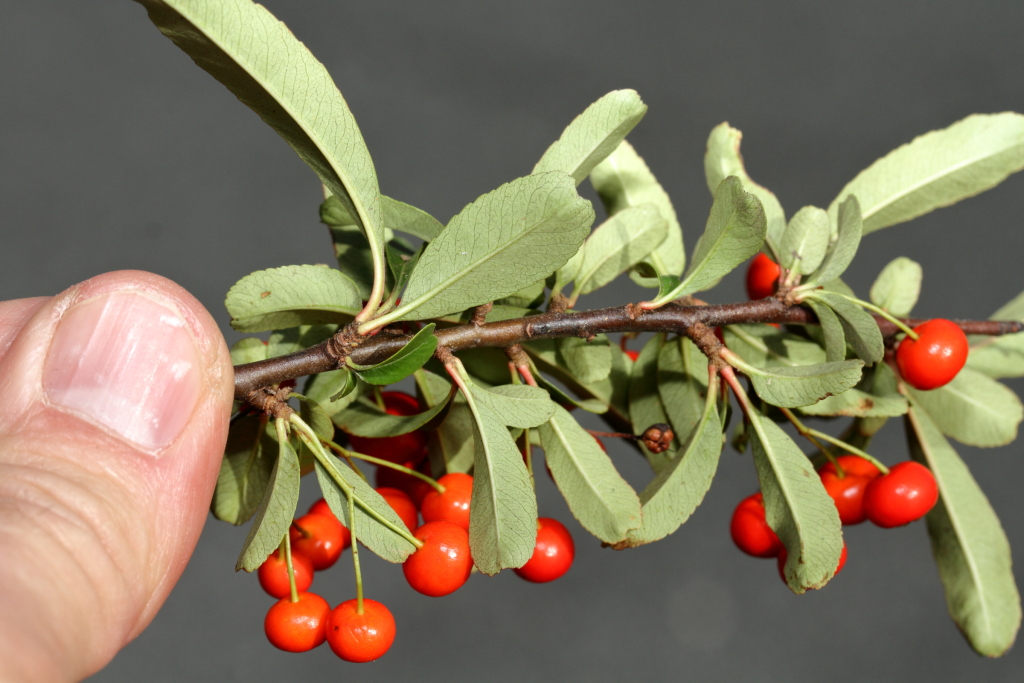Pyracantha
Evergreen spiny shrubs or small trees, strongly heterophyllous. Leaves simple, alternate, entire, serrate or crenulate, petiolate; those on young shoots usually much larger than those on weaker branchlets, also more often toothed; those on older branches variable in size, confined to short or spur shoots which are often spine-tipped; stipules minute, caducous. Inflorescence a compound corymb. Flowers bisexual. Sepals 5, persistent; petals 5, suborbicular, white; stamens 20; carpels 4–5, partially fused, walls bony in fruit, ovules 2 per carpel. Fruit a depressed-globose pome, crowned by persistent sepals and stamens, red, orange or yellow; pyrenes 4–5.
About 10 species from south-east Europe and Asia; 6 naturalised in Australia.
Several species are cultivated for their ornamental flowers and fruit.
Jeanes, J.A.; Jobson, P.C. (1996). Rosaceae. In: Walsh, N.G.; Entwisle, T.J., Flora of Victoria Vol. 3, Dicotyledons Winteraceae to Myrtaceae, pp. 556–585. Inkata Press, Melbourne.
 Spinning
Spinning

